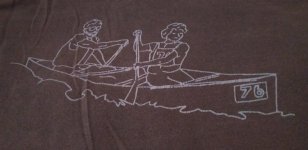- Joined
- Aug 21, 2018
- Messages
- 1,785
- Reaction score
- 2,148
I learned to canoe, beginning in 1987, in the Vancouver area. The best paddlers and instructors at the time were strongly opposed to the cross bow draw for tandem paddlers, primarily because it put both paddles on the same side of the boat, nearly as frowned upon as gunwale-grabbing. The bottom line was that you can do anything you want from your current paddle position. We even used prys, rather than cross bow draws to leave a strong current into an eddy. Some canoeing literature at the time said that prying into an eddy was too forceful, and could result in a capsize -- the cross bow draw was more stable. It must be said, that prying into an eddy required the bow paddler to consciously lean away from the pry, but that's what we did. Never capsized. One time, On a day trip with our canoe club, we were joined by some guest tandem paddlers. The bow paddler performed a Cross. bow draw. What the heck was that all about, Kathleen and I wondered. Veteran members of the club nodded knowingly, and told us that the guests were "from Ontario. The cross bow draw is an eastern stroke. We don't do that out here in British Columbia." Seemed like an extreme position to take. Heck, even a quick Goon Stroke, or Stern Pry, can occasionally be useful or necessary in certain river situations. But to this day, neither Kathleen nor I do Cross Bow Draws when paddling tandem.

